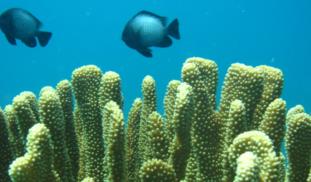Please wait...
About This Project
Reef-building corals are bleaching and dying at unprecedented rates due to ocean warming. However, corals bleach at very different rates- why? Corals are association of animals and symbiont algae that feed them. Some corals have skeletons that scatter light back to their algae much faster increasing light availability but that increases their risk of bleaching. We want to identify the skeletal morphological characteristics that may increase the risk of bleaching to better protect coral reefs.

Browse Other Projects on Experiment
Related Projects
How do polar bears stay healthy on the world's worst diet?
Polar bears survive almost entirely on seal fat. Yet unlike humans who eat high-fat diets, polar bears never...
Uncovering hidden insect diversity associated with a likely undescribed gall-forming midge
Does a likely undescribed species of gall-forming midge (pers. comm. Ray Gagné) on Eriodictyon plants (Yerba...
Macrofungi of the California archipelago
The eight islands of the California Archipelago are a well-studied biodiversity hotspot — but we know almost...


